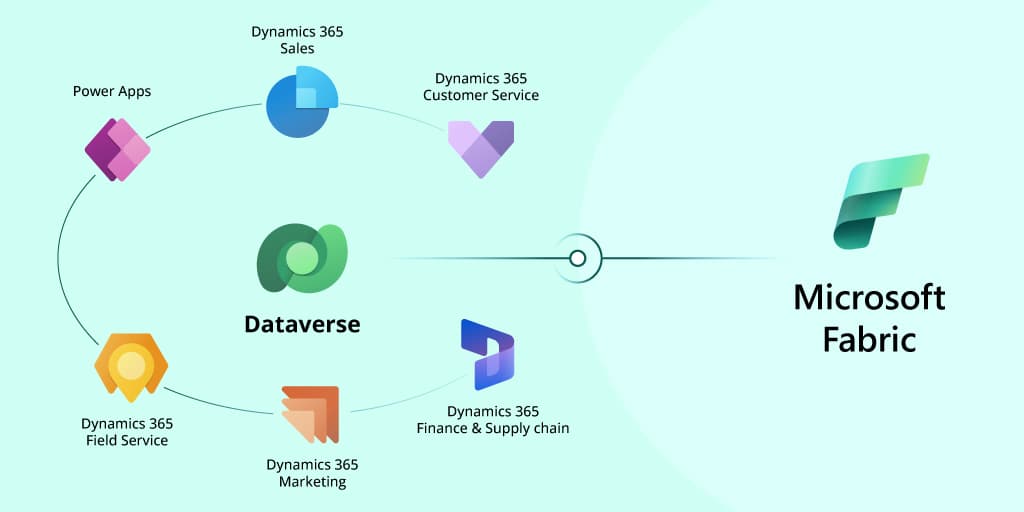
Microsoft Ignite 2024 Insights: Key takeaways from LevelShift
LevelShift had the opportunity to attend Microsoft Ignite 2024, where the buzz around AI, data integration, and digital transformation was t...

Cloud-based platforms like Microsoft Fabric manage massive volumes of sensitive data, making them attractive targets for cybercriminals. In 2021, the Microsoft Exchange Server hack compromised over 250,000 servers worldwide, exposing confidential data and causing widespread security breaches. This highlights the need for strong PII security in cloud ecosystems.
Sensitive data can exist in diverse types of environments given below, which require robust security measures:

According to recent studies, over 80% of organizations have faced cloud security breaches. The most common threats include:

These findings highlight the growing complexity and risks associated with cloud deployments.
Perforce Delphix Compliance Solutions enhance Microsoft Fabric’s security by mitigating sensitive data risks through the following methods:
Microsoft Fabric is a SaaS platform that provides built-in security across its ecosystem. Whether data is stored and analyzed using Power BI, Data Factory, or Synapse, Microsoft’s security measures protect data at rest and in transit. Even with Microsoft Fabric’s built-in data privacy solutions, securing Personally Identifiable Information (PII) requires additional safeguards to meet compliance standards.
While Fabric includes dynamic data masking, Perforce Delphix enhances security through masking and virtualization, preventing the exposure of actual PII and ensuring compliance. Perforce Delphix extends data protection through its seamless integration, offering greater control, privacy, and cost efficiency, making it a powerful combination for secure and compliant data management.

| Security Mechanism | Description | Key feature |
| Data Encryption (Fabric) | Encrypt data at rest and in transit using Microsoft encryption standards. | Ensures end-to-end security but does not anonymize data. |
| Role-Based Access Control (Fabric) | Restricts access based on roles via Microsoft Entra ID. | Controls access but does not transform or mask sensitive data. |
| Data Masking (Perforce Delphix) | Replaces PII with de-identified values while maintaining referential integrity. | Prevents exposure of real sensitive data. |
| Data Virtualization (Perforce Delphix) | Provides masked, virtualized copies of production data for development, testing, and analytics. | Enables secure test environments without duplicating raw data. |
| Column-Level Security (Fabric) | Restricts access to specific columns containing sensitive data. | Controls visibility but does not anonymize data. |
| Network Security and Firewall Rules (Fabric) | Uses Private Link, VNet, and firewall rules to restrict unauthorized access. | Secures perimeter but does not protect data once accessed. |
| Audit and Compliance Monitoring (Fabric and Perforce Delphix) | Tracks data access and changes for compliance with GDPR, HIPAA, PCI-DSS. | Fabric logs access while Perforce Delphix ensures compliance through anonymization. |
| ADF Integration (Both) | Moves data securely between sources and destinations. | Fabric focuses on access security, while Perforce Delphix ensures only masked data is moved. |
Perforce Delphix extends these capabilities by enhancing data masking beyond Microsoft’s native features, providing secure, virtualized copies of production data, reducing exposure of real PII, and enabling robust analytics.


The data masking process using Perforce Delphix within Microsoft Fabric involves the following steps:
Setting up Perforce Delphix with Microsoft Fabric requires the following prerequisites to ensure seamless integration:
1. App Registration for Perforce Delphix Compliance Service – Register an application in Azure and obtain client credentials.
2. App Registration for Fabric – Register an application in Azure for Fabric and obtain the necessary credentials.
NOTE: To obtain the necessary credentials, refer to Perforce Delphix documentation.
3. Set Up Azure Data Factory Pipeline – Use the ADF pipeline template from GitHub to configure Fabric Warehouse.
NOTE: To configure Fabric Warehouse as the source and target for the pipeline, follow the instructions provided in the Perforce Delphix Onboarding documentation. You can also watch the demo: DCS_Fabric_Demo
4. Linked Services – Create linked services to connect to Azure Data Factory with Fabric Warehouse and another linked service to Perforce Delphix Compliance Service.
5. Masking Validation – Execute the pipeline with sample data and verify the masked fields.
As proof of concept (POC), we applied specific masking algorithms to the “Customer Relations” table in the Fabric Warehouse. Fields such as First Name, Last Name, Date of Birth, Email, and Phone Number were successfully masked. We verified the pipeline execution by checking the Fabric Warehouse table to ensure compliance and security.

By integrating Perforce Delphix with Microsoft Fabric, organizations can significantly enhance data security, maintain compliance, and ensure safe PII usage across analytics and AI-driven environments. As businesses continue to navigate the complexities of cloud security, adopting proactive approaches to data masking, encryption, and compliance monitoring is essential.
LevelShift provides end-to-end Microsoft Fabric consulting services and expertise in Fabric, Azure, and Perforce Delphix to help businesses strengthen their data security posture. As a trusted Microsoft Fabric consulting company, we specialize in IT governance risk and compliance, ensuring organizations can securely leverage Microsoft Fabric service for their data needs.
Contact us to learn how we can assist your organization in safeguarding sensitive data while maximizing the potential of Microsoft Fabric.
This blog is written by Priyadarshini Subramanian, Madhuvanthi Thirunavukkarasu, Anu Shruthi Sathiyanathan – Data Engineers, LevelShift

Why Real Time Intelligence is Crucial For a business leader evaluating real-time...

Whether you work in manufacturing, retail, logistics, healthcare, finance, Hi-Te...

Microsoft Fabric is an integrated analytics platform that simplifies data manage...

Microsoft Ignite 2024 Insights: Key takeaways from LevelShift
LevelShift had the opportunity to attend Microsoft Ignite 2024, where the buzz around AI, data integration, and digital transformation was t...

Microsoft Fabric vs Databricks – Unified Simplicity vs Custom ML Powerhouse
Introduction As data platforms evolve, organizations are evaluating tools not just for analytics but for their full potential in AI, data en...

Leveraging Microsoft Fabric for Dynamics 365 with Dataverse
Businesses using Dynamics 365 for CRM, Finance & Operations (F&O), and Business Central generate essential data daily. Managing and ...